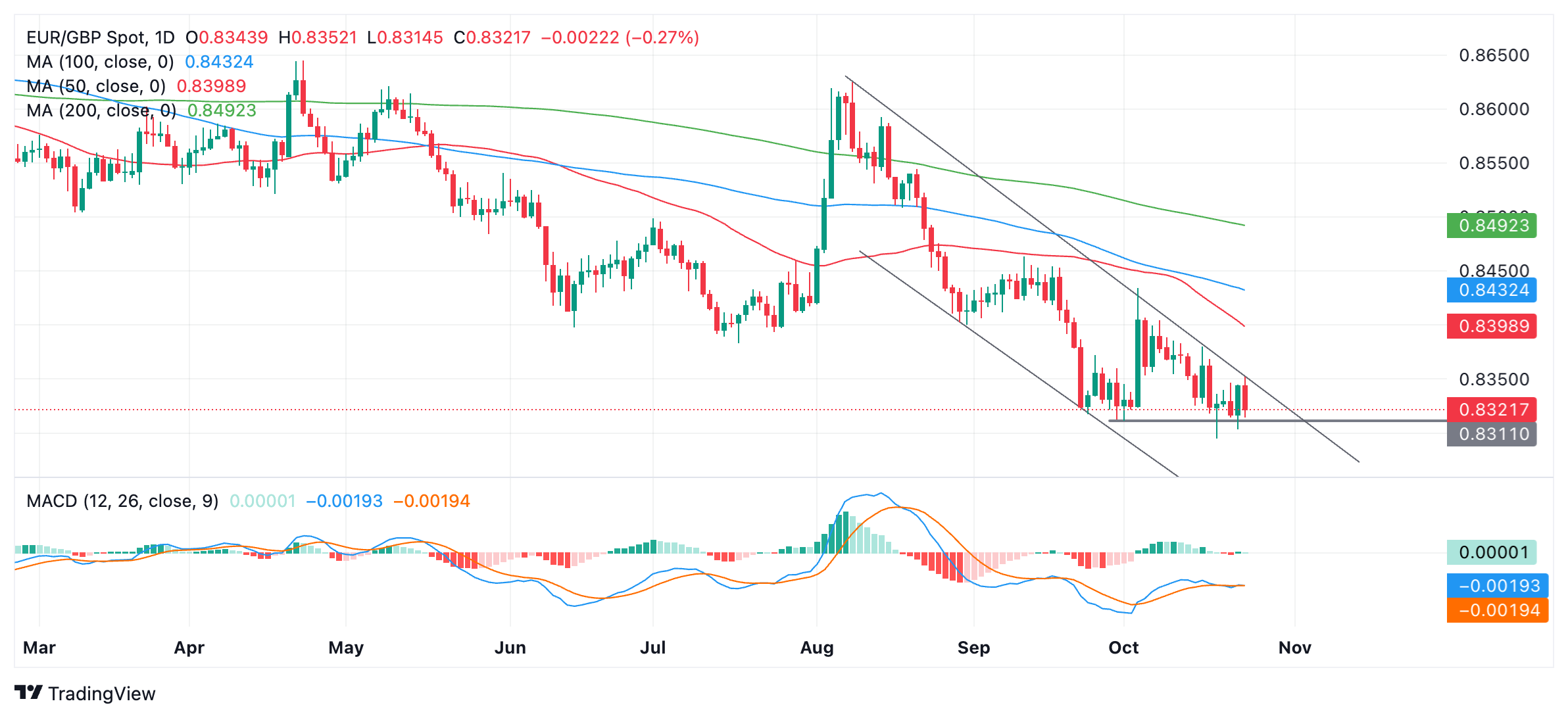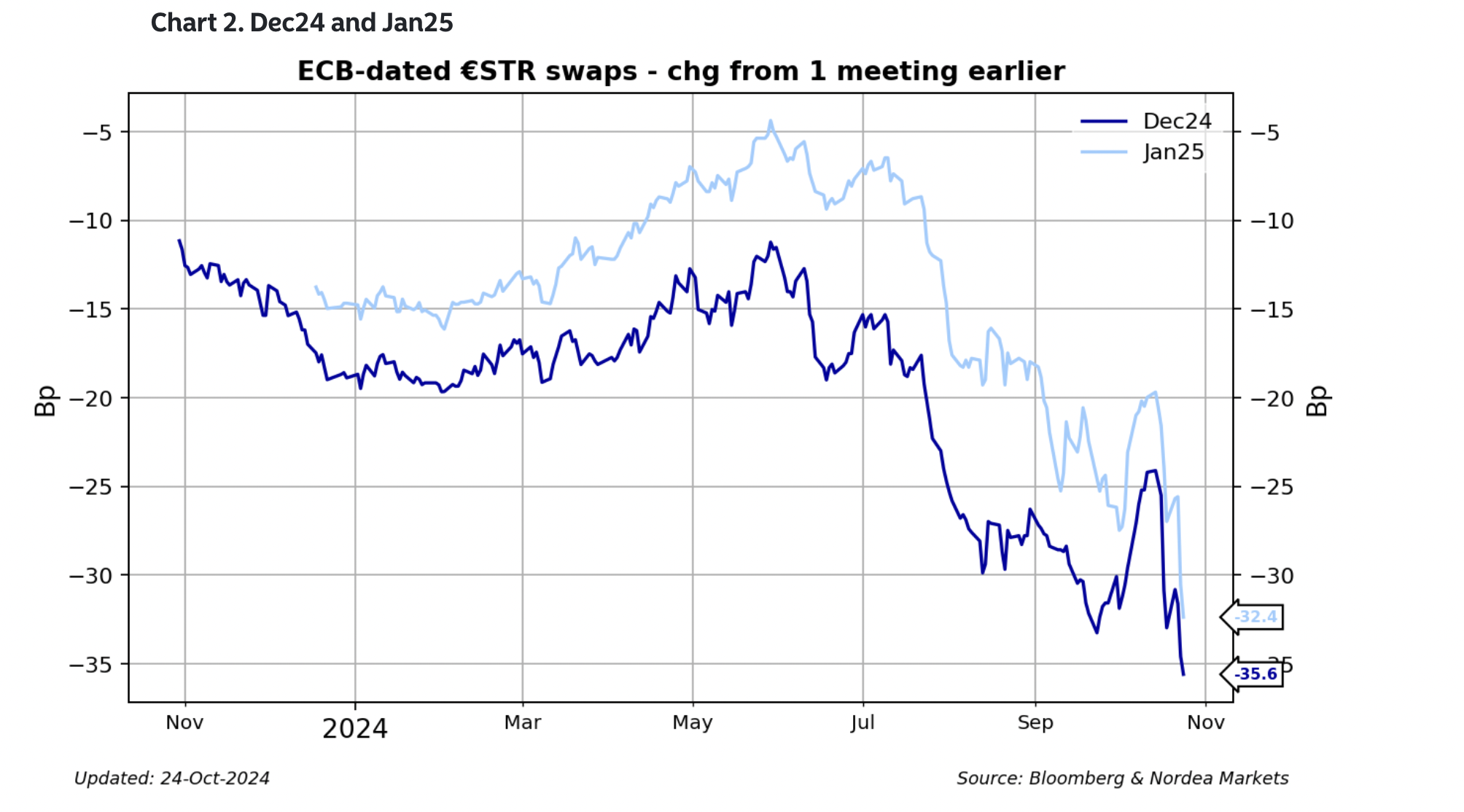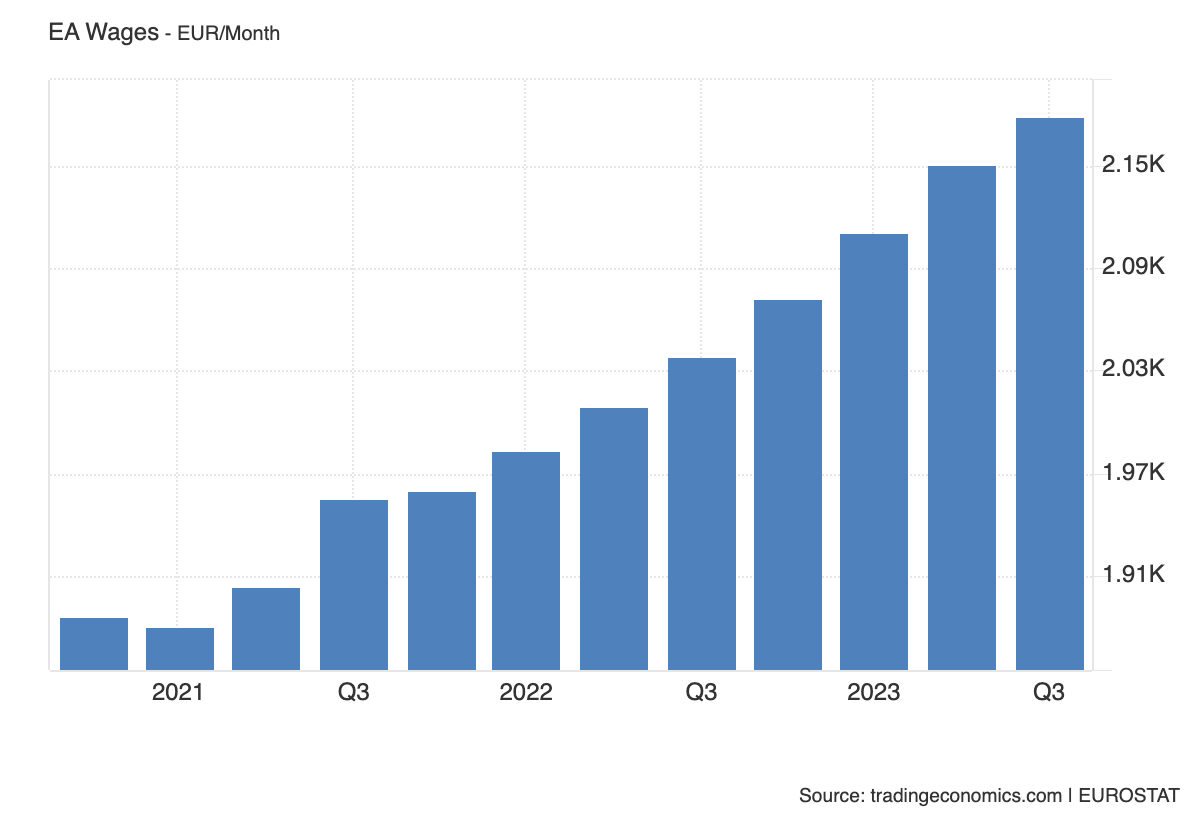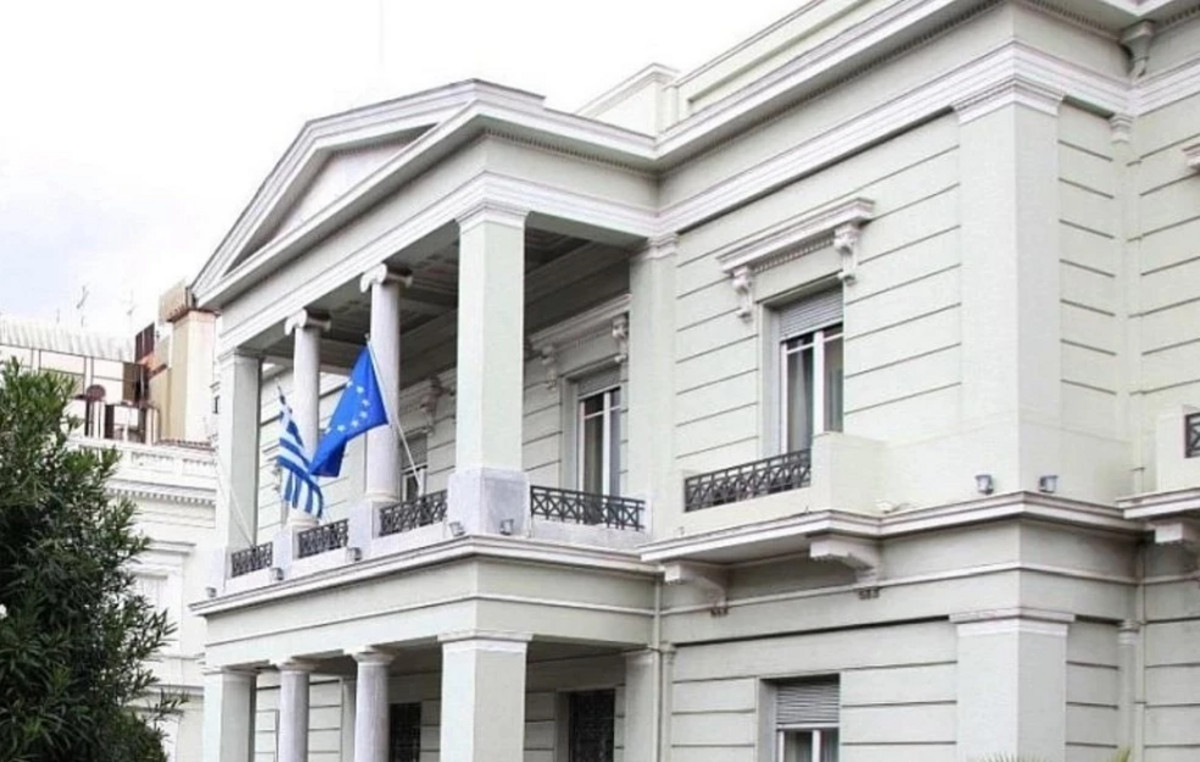- EUR/GBP remains pressured at two-year lows on speculation that the ECB could cut interest rates before the end of the year.
- Lower interest rates would reduce foreign capital inflows, weighing on the Euro.
- Pound holds firm despite weak PMI data and moderately dovish comments from BoE Governor Bailey.
EUR/GBP is trading at two-year lows in the 0.8320 area on Thursday, having fallen a quarter of a percentage point on the day mainly due to a weaker Euro (EUR). The single currency is falling as a result of growing market speculation that the European Central Bank (ECB) will have to cut interest rates more aggressively – and to a lower base – than previously expected, to avoid a hard landing. for the Eurozone economy.
Meanwhile, the British Pound (GBP) remains stable due to the Bank of England’s (BoE) relatively high bank rate of 5.00%, which now stands out as one of the highest in the G10 and acts as a magnet for the capital. Furthermore, the BoE is not expected to cut interest rates at the same pace as most other major central banks, suggesting this could favor the Pound towards the end of 2024.
EUR/GBP falls as markets review Eurozone outlook
EUR/GBP loses ground on Thursday and is at multi-year lows as the Euro weakens against the British Pound.
The catalyst for this weakness comes from a surprise drop in Eurozone economic data, particularly inflation. Headline inflation in the euro zone was revised down to 1.7% in September from its preliminary estimate of 1.8%, falling below the ECB’s 2.0% target for the first time in more than three years , according to recent data from Eurostat. The surprise drop provided the catalyst for speculation that the bank may need to cut interest rates more aggressively than previously expected.
A Reuters story on Wednesday added fuel to the fire after it reported that the ECB was considering cutting interest rates below the “neutral” rate. The neutral rate, also known as the “breakeven level” of interest rates, is a theoretical level at which inflation should remain unchanged. The story added to speculation that the ECB was sharpening its sword and led investors to sell the Euro.
EUR/GBP Daily Chart
“Rates are falling significantly as markets are pricing in a higher likelihood of the ECB opting for a 50 basis point rate cut in December,” said Andres Larsson, Senior FX Analyst at Nordea Bank, adding, “… and a greater likelihood that the ECB will eventually cut rates below neutral,”
According to Larsson, the market is pricing in “-35.6 bp for the December ECB meeting and -32.4 bp for the January 25 ECB meeting.” This is substantially higher than a few weeks ago.
Eurozone data released on Thursday failed to calm speculation. Preliminary mixed PMIs for October revealed that manufacturing activity increased but is still in contraction territory (below 50) at 45.9 vs. 45.1 expected. The services PMI fell to 51.2 versus 51.5 expected and 51.4 in September.
“Today’s PMIs were more or less in line with expectations, although the employment component fell below 50, pointing to the risk of rising unemployment in the future,” Larsson said.
Employment and wages could be a key determining factor in whether the ECB decides to go for a “Christmas cut” or not.
ECB Chief Economist Philip Lane has said wage inflation is likely to remain elevated in the second half of 2024 and contribute to higher headline inflation over the period before falling in 2025.
According to second quarter wage growth data, Eurozone wages increased by 4.5%, which, although lower than the previous quarter’s 5.2%, is still high. There is no data for the third quarter yet, however, the average monthly salary in the Eurozone continues to increase quite strongly, reaching €2,180 in September.
EUR/GBP at record lows as Pound holds firm despite weak data
Meanwhile, the Pound remains firm despite weaker-than-expected UK PMI data for October. This showed the Manufacturing PMI falling to 50.3 vs. 51.5 expected and actual in September, and the Services PMI falling to 51.8 vs. 52.4 expected and actual in September. The data could limit gains for the EUR/GBP pair.
“The weak PMI result coupled with the sharp slowdown in inflation increases the likelihood that the BoE will accelerate its easing cycle, which could further limit GBP’s bullish momentum on crosses,” said Elias Haddad, Senior Strategist. of Markets at Brown Brothers Harriman (BBH).
The October distributive trade survey from the Consortium of British Industry (CBI) was also weaker than expected. CBI total orders came in at -27 vs -28 expected, while selling prices came in at 0 vs 9 expected and 8 in September. “More importantly, its quarterly measure of business optimism came in at -24 versus -5 expected and -9 in July and is the lowest since October 2022,” Haddad said.
In a recent speech, BoE Governor Andrew Bailey struck a mildly dovish tone after saying that “disinflation is happening I think faster than we expected, but we still have real unknowns about whether there have been some structural changes in the economy.” economy.”
At the same time, Bailey did not reiterate the need for a more “activist” and “aggressive” stance on cutting interest rates as he had done in an earlier speech. Markets interpreted this as Bailey acknowledging that he had overreacted in previous comments and that he was trying to steer the ship back to a more “cautious” approach. As such, the Pound held firm.
Source: Fx Street
I am Joshua Winder, a senior-level journalist and editor at World Stock Market. I specialize in covering news related to the stock market and economic trends. With more than 8 years of experience in this field, I have become an expert in financial reporting.










